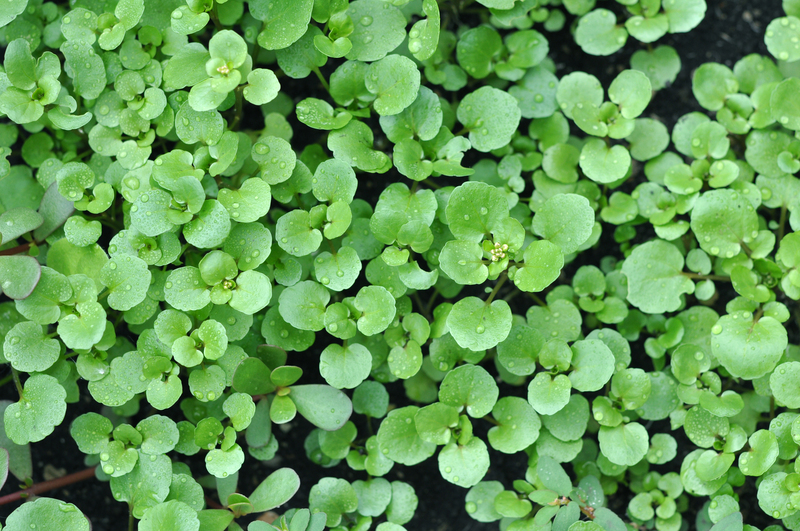The Eco-Friendly Power of Gardening for Climate Change Mitigation
Posted on 19/08/2025
The Eco-Friendly Power of Gardening for Climate Change Mitigation
Gardening is much more than a fulfilling pastime. In an era marked by rapid environmental change, gardening stands out as a powerful, accessible, and eco-friendly approach to climate change mitigation. Whether you tend a backyard plot, grow potted plants on an apartment balcony, or participate in a community garden, your green thumb can contribute to a healthier planet. This comprehensive article delves into the eco-friendly power of gardening for climate change mitigation, encapsulating the science, methods, and benefits associated with sustainable horticulture.
Why Eco-Friendly Gardening Matters for Climate Change
Climate change is one of the most pressing issues of the 21st century, driven largely by increased levels of greenhouse gases such as carbon dioxide (CO2) and methane (CH4). The cumulative effects of deforestation, industrial agriculture, and fossil fuel use have led to global warming, erratic weather patterns, and ecosystem disruptions. In this context, sustainable gardening practices serve as localized solutions with global ramifications, making the notion of gardening for climate change mitigation an actionable strategy.
The Role of Carbon Sequestration in Eco-Friendly Gardens
One of the most significant ways that gardening contributes to climate mitigation is through carbon sequestration. Plants absorb CO2 from the atmosphere during photosynthesis, converting it to oxygen and storing it in stems, leaves, roots, and soil. This process not only reduces atmospheric greenhouse gases but also enriches soil health for long-term climate resilience.
- Trees and shrubs: Woody plants are exceptional long-term carbon sinks.
- Cover crops: Fast-growing cover plants enhance soil fertility and capture atmospheric CO2.
- Composting: Incorporating organic matter returns carbon to the earth instead of releasing it as methane in landfills.

Eco-Friendly Gardening Practices for Climate Mitigation
Not all gardening practices are inherently beneficial to the environment. The use of synthetic fertilizers, pesticides, and peat-based composts can contribute to ecological imbalance and carbon emissions. However, shifting towards environmentally-friendly gardening strategies transforms gardens into carbon-neutral or even carbon-negative spaces, directly aiding in the fight against climate change.
Organic Gardening: The Sustainable Solution
Organic gardening emphasizes natural cycles, biodiversity, and soil health. By eliminating synthetic chemicals, gardeners maximize the ecosystem services their plots provide. Here are some key strategies:
- Composting: Converts kitchen and garden waste into valuable organic fertilizer while minimizing landfill emissions.
- Natural Pest Control: Companion planting and beneficial insects reduce the need for chemical pesticides.
- Mulching: Conserves soil moisture, suppresses weeds, and contributes organic matter to the soil.
Water Management for Eco-Friendly Gardens
Effective water management is vital both for sustainability and climate resilience. Gardens designed to conserve water not only cut down on resource waste but also reduce the energy required for water treatment and distribution.
- Rainwater harvesting: Collects and reuses natural precipitation for garden irrigation.
- Drip irrigation: Delivers water directly to the plant roots, minimizing evaporation and runoff.
- Plant selection: Native and drought-tolerant species are adapted to local climates, reducing water demands.
Mitigating Climate Change Through Urban Gardening
Urban areas are often associated with higher carbon footprints due to concentrated populations and extensive infrastructure. However, urban gardening presents unique opportunities for climate action on a local scale. Rooftop gardens, balcony planters, and community gardens all help to offset urban emissions in several ways:
- Reducing the urban heat island effect: Vegetation cools cities by providing shade and promoting evapotranspiration.
- Improving air quality: Plants absorb airborne pollutants and release oxygen.
- Promoting local food production: Less transportation reduces carbon emissions associated with food supply chains.
Community Gardens: Collective Eco-Friendly Action
Community gardens foster cooperation, education, and environmental stewardship. Shared plots utilize resources efficiently, increase green spaces in densely populated neighborhoods, and cultivate collective responsibility for climate mitigation. Research highlights that participation in community gardening boosts carbon sequestration and promotes sustainable behaviors.
Soil Health: The Foundation of Climate-Friendly Gardening
Healthy soil is the unsung hero of eco-friendly gardening for climate change mitigation. Robust soil ecology acts as a carbon sponge, storing organic matter and reducing soil erosion. Here's how to ensure optimal soil health:
- No-dig gardening: Minimizes soil disturbance to preserve carbon stores and beneficial microbes.
- Crop rotation and polyculture: Diversifies plantings to reduce pest build-up and maintain nutrient cycles.
- Biochar: Using stable forms of carbon in soil can lock away carbon for centuries.
Regenerative Gardening: An Advanced Approach
Regenerative gardening goes a step further than sustainability by actively improving soil and ecosystem health. Practices like cover cropping, using perennial species, and integrating animals (where appropriate) can dramatically increase the garden's ability to store carbon and support climate resilience.
The Biodiversity Connection: Gardens as Ecological Havens
Gardening for climate change isn't just about carbon. Biodiversity preservation is equally critical. Diverse gardens support pollinators, decomposers, birds, and beneficial organisms, strengthening natural pest control and plant pollination. This interconnectedness increases resilience to climate stressors, pest outbreaks, and disease.
How to Enhance Biodiversity in Your Eco-Friendly Garden
- Grow a variety of native species to provide year-round food and habitat for wildlife.
- Create water features, such as birdbaths or ponds, for amphibians and insects.
- Leave wild areas or "insect hotels" for solitary bees and beneficial bugs.
- Avoid pesticides that can disrupt local ecosystems and harm non-target species.
Reducing Waste and Pollution in Gardening
A core principle of climate-resilient gardening is waste reduction. By minimizing reliance on non-renewable inputs and synthetic materials, gardeners shrink their ecological footprint. Consider the following eco-friendly actions:
- Reuse and recycle: Repurpose containers, tools, and water whenever possible.
- Home composting: Retain organic matter onsite to enrich beds and reduce transport emissions.
- Avoid single-use plastics: Choose biodegradable pots and use natural mulches.
The Science Behind Garden-Based Climate Mitigation
Scientific studies continually underscore the climate mitigation potential of eco-friendly gardening. A small suburban plot with trees and rich soil can lock away tons of carbon over its lifetime. Meanwhile, gardens filled with annual monocultures or reliant on synthetic products may do more harm than good.
Recent Research: Quantifying the Carbon Sequestration Potential
A 2023 meta-analysis in "Environmental Research Letters" found that urban gardens, when managed organically and with perennial plantings, sequester between 0.5 and 1.6 metric tons of carbon per hectare per year--roughly the equivalent of offsetting several months' of average household emissions. Community gardens fared even better, thanks to shared composting efforts and coordinated planting strategies.
Key Findings:
- Gardens with deep, undisturbed soils and continuous mulch cover outperformed heavily tilled plots.
- Native tree and shrub integration dramatically boosted carbon retention.
- Using homegrown compost cut garden-related emissions by up to 90% versus bagged, peat-based materials.
Case Studies: The Impact of Eco-Friendly Gardening for Climate Change Mitigation
Greening Urban Deserts in Los Angeles
A Los Angeles gardening collective succeeded in transforming underused vacant lots into productive, biodiverse gardens. Over five years, this initiative sequestered an estimated 250 metric tons of carbon, reduced urban temperatures by an average of 2?C, and provided educational resources on sustainable gardening for thousands of residents.
Backyard Forests in Germany
An experiment by German homeowners involved "backyard afforestation"--planting small groves of native trees and reducing lawn areas. In one suburb, this transition was estimated to double carbon sequestration while improving stormwater management and pollinator diversity.
Compost Co-Ops in the UK
Neighborhood composting programs in London have diverted hundreds of tons of organic waste from landfills annually, cutting methane emissions and creating a circular ecosystem where local gardens benefit from nutrient-rich, locally-produced compost.
Practical Tips: How You Can Harness the Eco-Friendly Power of Gardening
Ready to garden for climate change mitigation? Follow these actionable tips to maximize your garden's positive environmental impact:
- Choose native, perennial, and carbon-sequestering plants: These species support biodiversity and require less energy and water to thrive.
- Create a compost system: Recycle organic waste into valuable fertilizer and reduce landfill emissions.
- Mulch deeply and regularly: Maintain soil moisture, suppress weeds, and add organic matter back to the soil.
- Practice no-dig gardening: Protect the carbon stores already present underground.
- Install a rain barrel or adopt low-water landscaping: Conserve water and reduce runoff.
- Foster habitats for pollinators: Grow wildflowers and provide shelter for bees and butterflies.
- Limit synthetic fertilizers and pesticides: Choose organic, home-created, or natural alternatives.
The Broader Benefits of Gardening for Climate Resilience
Beyond climate change mitigation, eco-friendly gardening offers myriad co-benefits:
- Improved food security: Growing your own produce reduces reliance on carbon-intensive food supply chains.
- Enhanced mental and physical health: Green spaces are linked to lower stress and better wellbeing.
- Community empowerment: Shared gardening efforts promote education, social connection, and resilience.
- Water security and runoff reduction: Gardens absorb rainfall, reducing the risk of urban flooding.

Eco-Friendly Gardening: Everyone Can Make a Difference
While large-scale reforestation and industrial reforms are crucial, individual and collective action in the form of climate-friendly gardening builds grassroots momentum. As home gardeners and community members, each of us wields the power to nurture local ecosystems, lock away atmospheric carbon, and inspire others to join the eco-friendly movement.
In conclusion, the eco-friendly power of gardening for climate change mitigation is rooted in simple acts--planting, composting, and caring for living things. These practices, when multiplied by millions, create a significant force for good in the quest for a stable climate and a thriving, sustainable future.
Further Reading & Resources
- EPA: Benefits of Urban Gardens
- Royal Horticultural Society: Gardening in a Changing World
- Garden Organic UK: Eco-Friendly Gardening Tips
For more eco-friendly gardening insights and practical guides, subscribe to our newsletter or share your own climate mitigation gardening story in the comments below!

